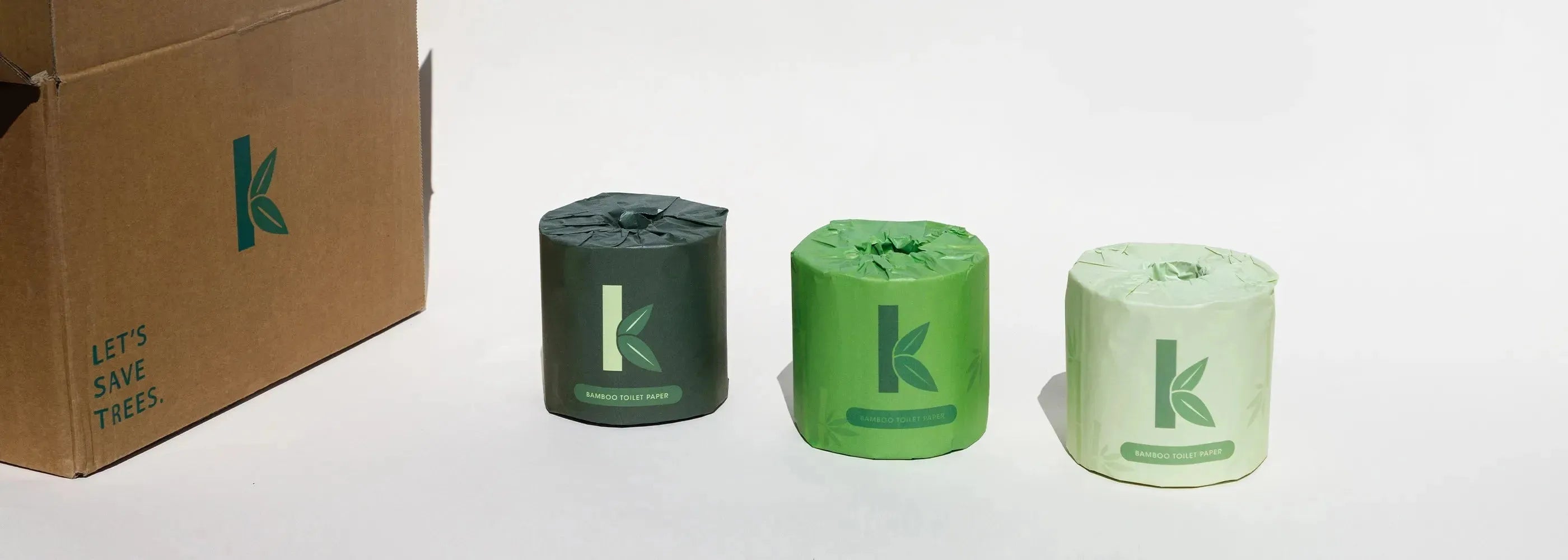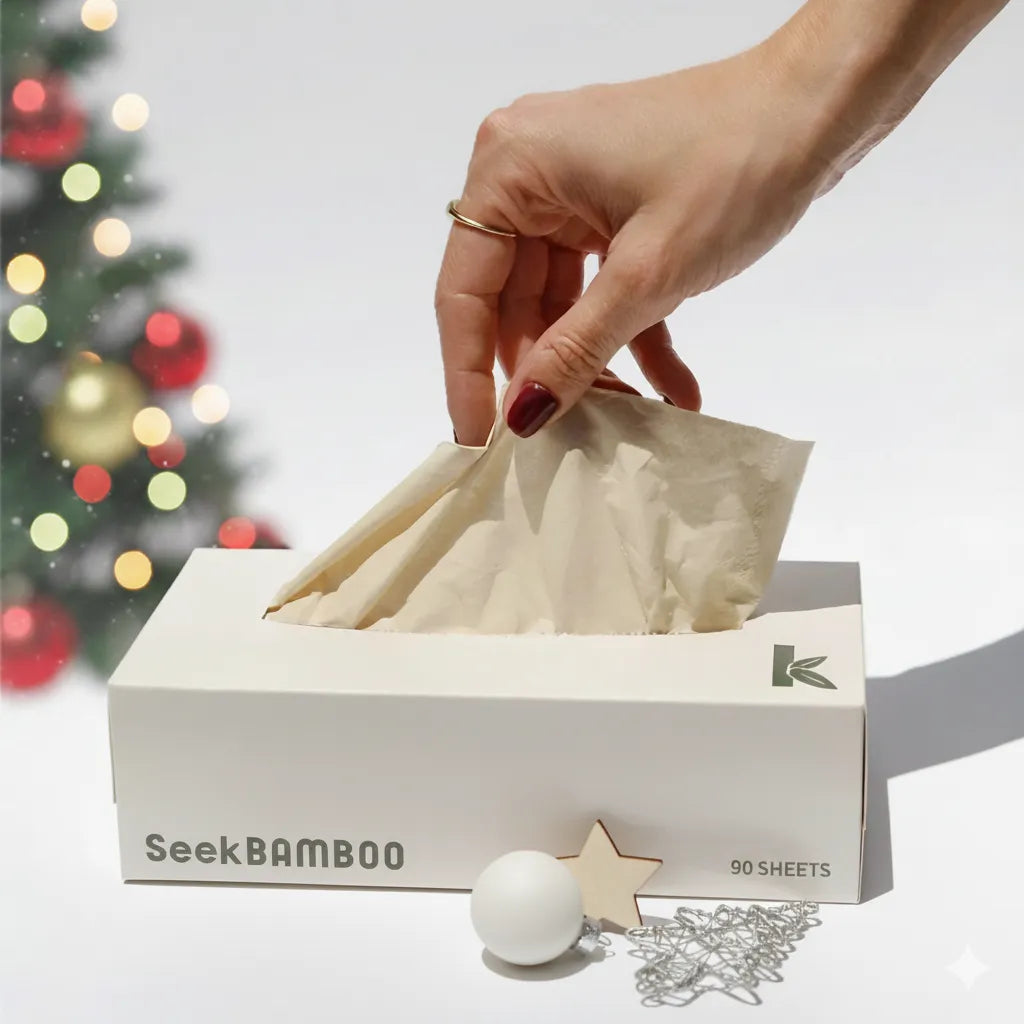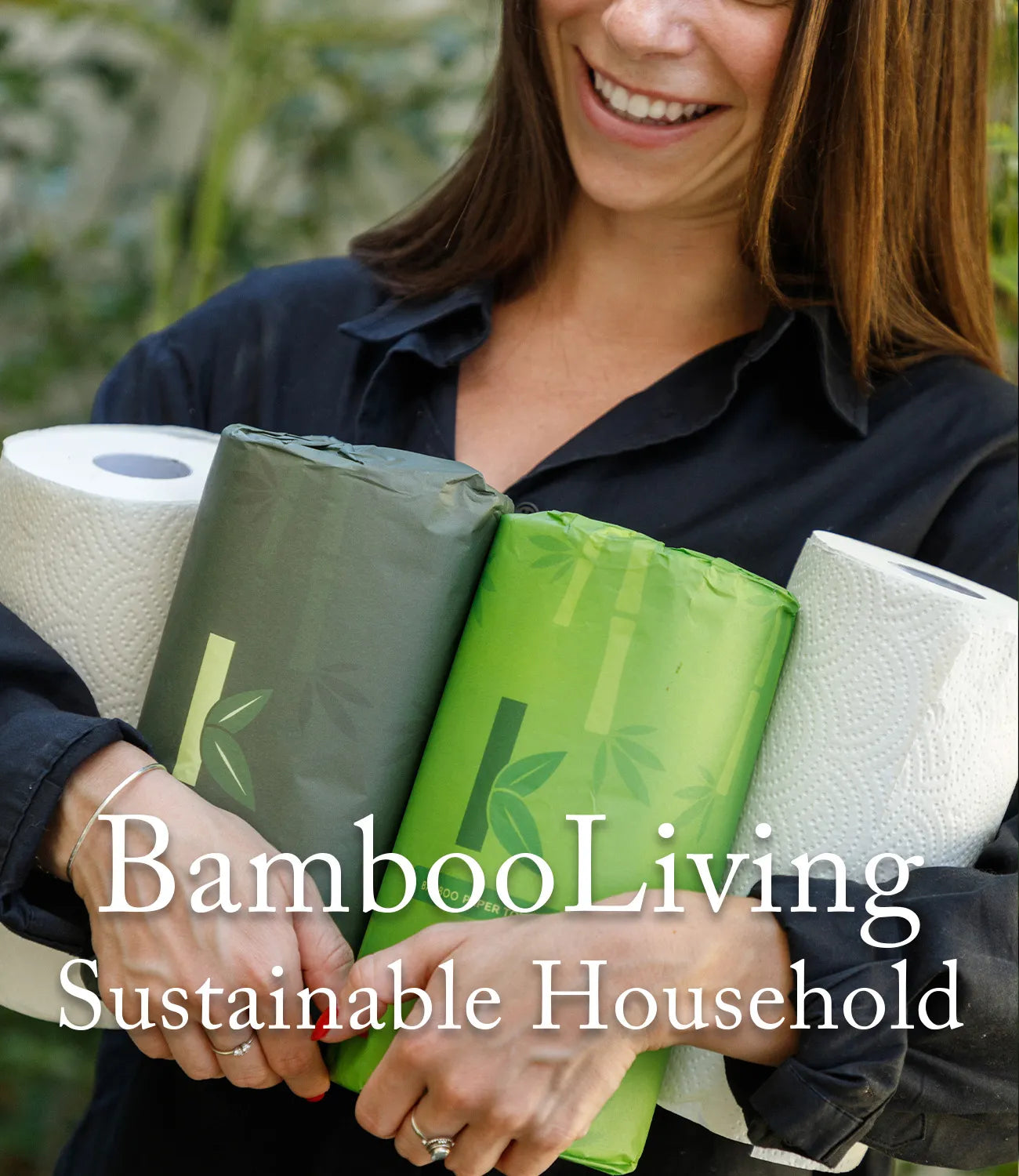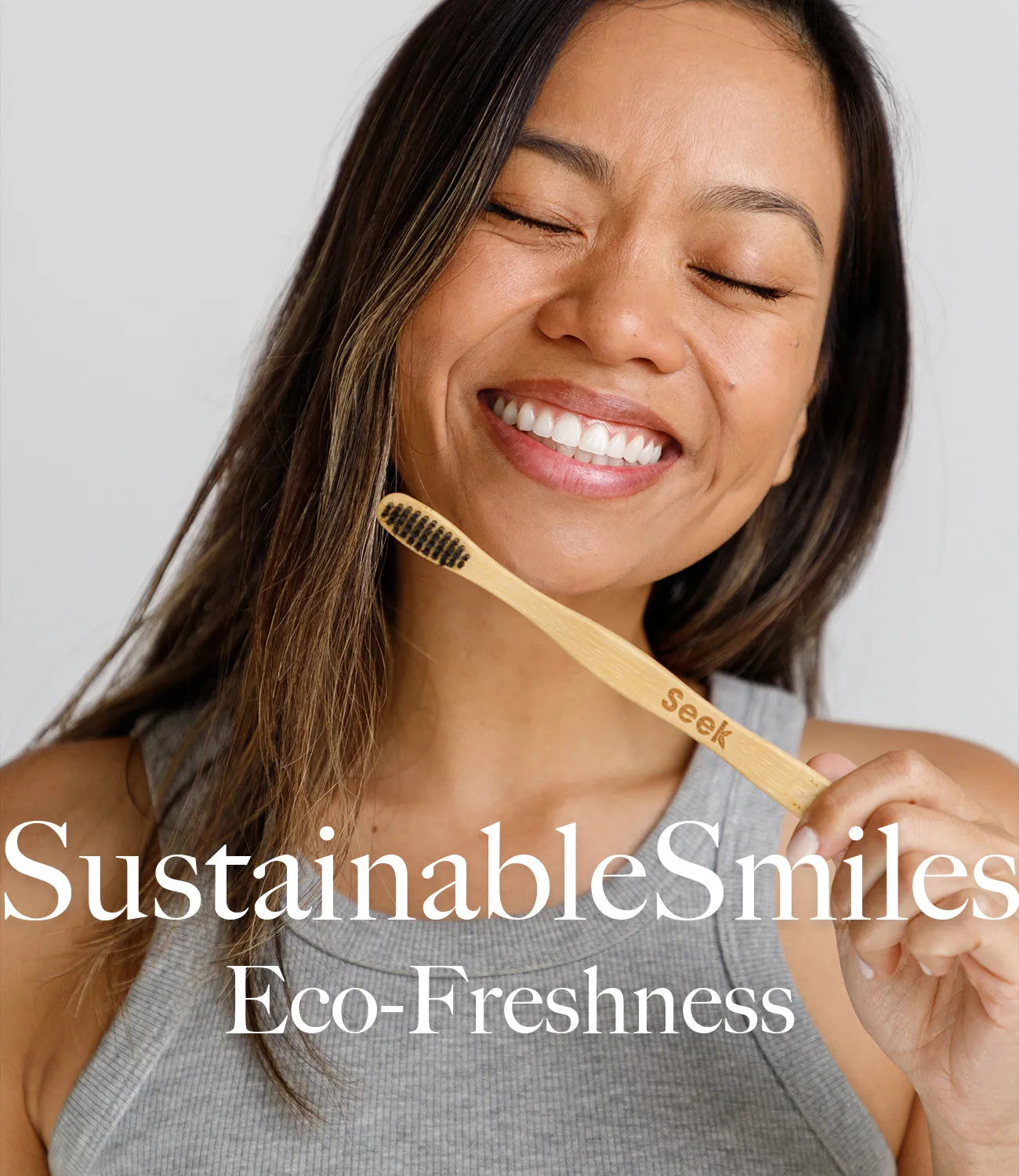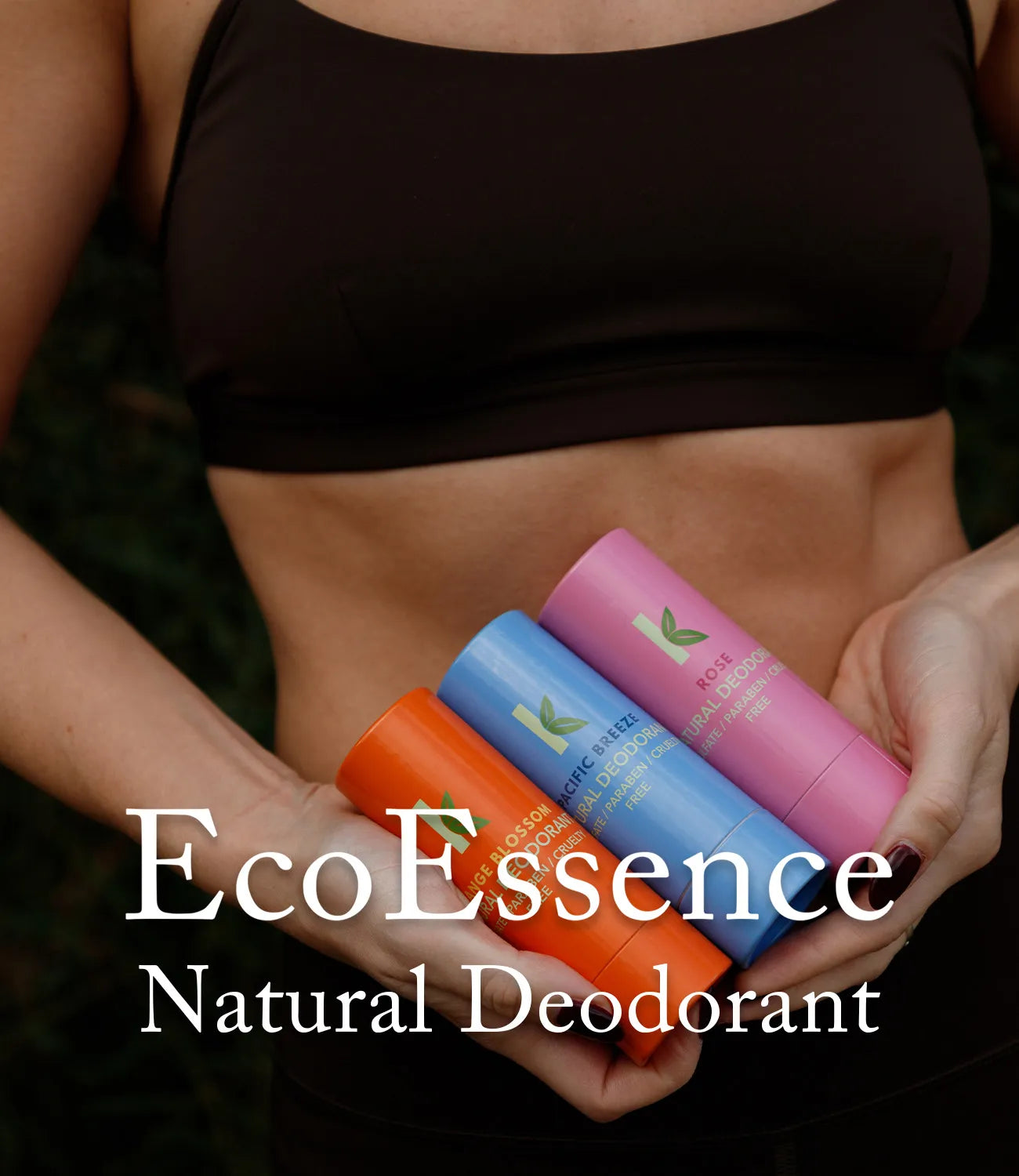Does Toilet Paper Expire?
Toilet paper is one of those household essentials that most of us take for granted—until we find ourselves reaching for a roll that’s been sitting in the back of a cupboard for who-knows-how-long. With the increasing focus on preparedness and bulk buying, many people are stocking up on toilet paper, leading to the inevitable question: Does toilet paper expire?
While it’s not something we typically think about, understanding the shelf life of toilet paper is more relevant than ever, especially if you’re investing in high-quality or eco-friendly options like bamboo toilet paper. Unlike perishable goods, toilet paper doesn’t come with a clear expiration date, leaving many to wonder about its longevity and the factors that might affect it over time.
In this blog, we’ll explore the ins and outs of toilet paper shelf life, from what can cause it to deteriorate to how you can store it properly to ensure it stays fresh and ready for use. Whether you’re stocking up on conventional rolls or making the switch to more sustainable bamboo toilet paper, this guide will help you keep your supply in top condition.
By understanding what impacts the quality of your toilet paper over time, you can make informed decisions about how much to buy, how to store it, and when it might be time to replace it. And if you’re considering a more durable, environmentally friendly option, we’ll also discuss why bamboo toilet paper might just be the best choice for your household.
What is the Shelf Life of Toilet Paper?
Toilet paper is a staple in every household, but how long can you expect it to last? Unlike food or medicine, toilet paper doesn’t come with an expiration date stamped on the package, leading to some uncertainty about its longevity. While toilet paper doesn’t technically “expire,” its quality can degrade over time, depending on several factors.
Material Quality
The type of material used to produce toilet paper plays a significant role in its shelf life. Conventional toilet paper is typically made from either virgin pulp (newly harvested wood fibers) or recycled paper. Virgin pulp toilet paper tends to be stronger and more durable, giving it a longer shelf life. On the other hand, recycled paper may break down faster, especially if exposed to moisture or improper storage conditions.
Bamboo Toilet Paper
Bamboo toilet paper, a newer and more sustainable option, is known for its durability and strength. Bamboo fibers are naturally long and resilient, which means bamboo toilet paper is less prone to breaking down over time compared to both virgin and recycled paper. This makes bamboo toilet paper not only a more eco-friendly choice but also one that’s likely to last longer in storage.
Thickness and Ply Count
The thickness and ply count of toilet paper can also impact its longevity. Toilet paper is available in various ply counts, with each “ply” representing a layer of paper. Typically, higher ply counts result in thicker, more absorbent toilet paper, which is generally more durable. Thicker toilet paper is less likely to deteriorate quickly, making it a better option for long-term storage.
However, if stored improperly, even high-ply toilet paper can suffer from issues like brittleness or moisture damage. Bamboo toilet paper, often available in 2-ply or 3-ply options, combines thickness with the natural strength of bamboo fibers, making it a reliable choice for maintaining quality over time.
Storage Conditions
While material quality and thickness are important, the way toilet paper is stored is equally crucial. Even the best-quality toilet paper can deteriorate if exposed to poor storage conditions. Factors such as humidity, temperature, and exposure to light can all contribute to the breakdown of toilet paper fibers.
To maximize the shelf life of your toilet paper, it’s essential to store it in a cool, dry place, away from direct sunlight. Keeping it sealed or in a protective container can help prevent moisture damage and maintain its usability for years to come.
Toilet Paper Longevity
In general, toilet paper can last indefinitely if stored properly, but its quality may start to degrade after a few years, especially if it’s made from recycled materials or stored in less-than-ideal conditions. For those looking for a longer-lasting and more durable option, bamboo toilet paper is a smart choice, offering both strength and sustainability. By understanding the factors that influence the shelf life of toilet paper, you can ensure that your supply remains fresh and ready for use whenever you need it.
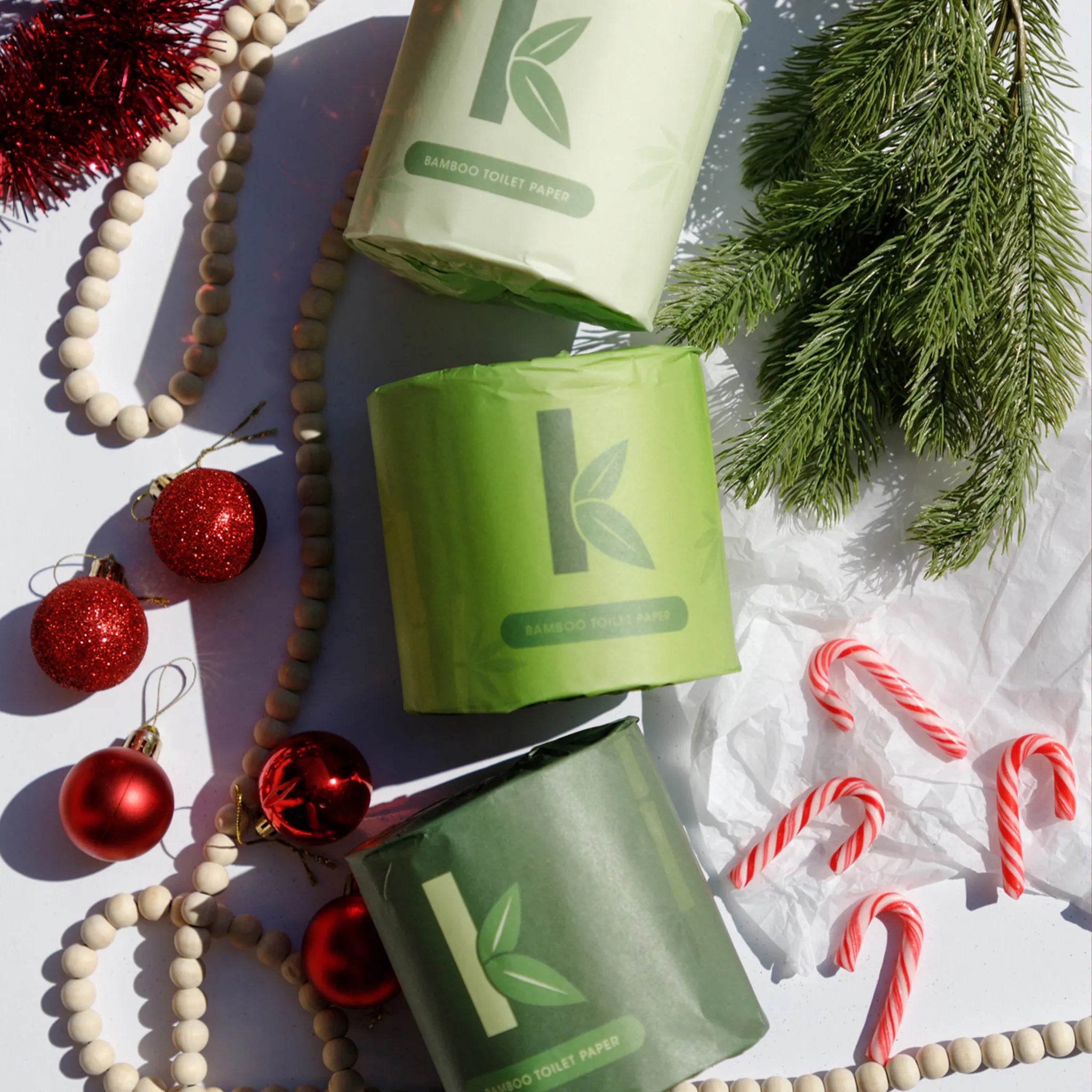
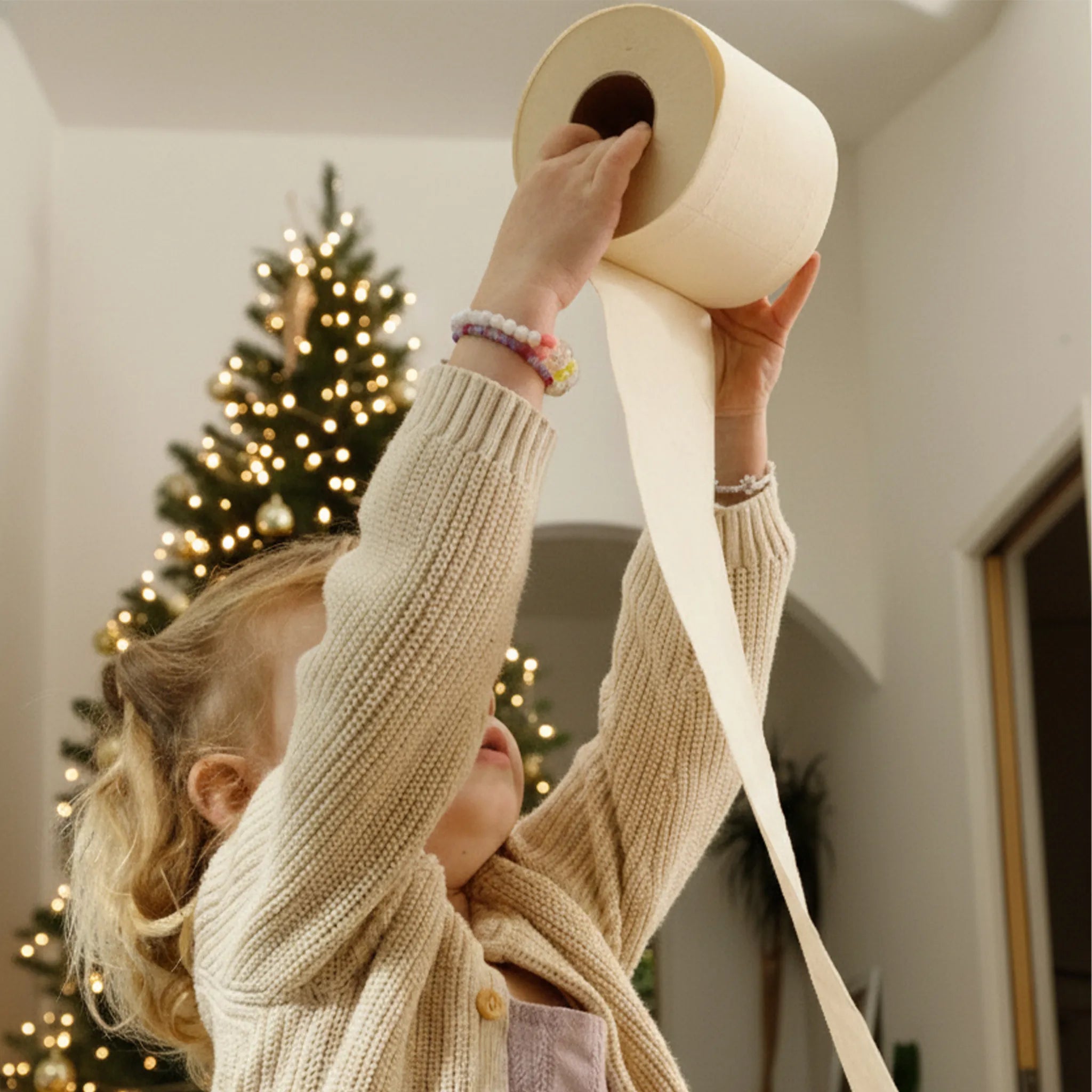
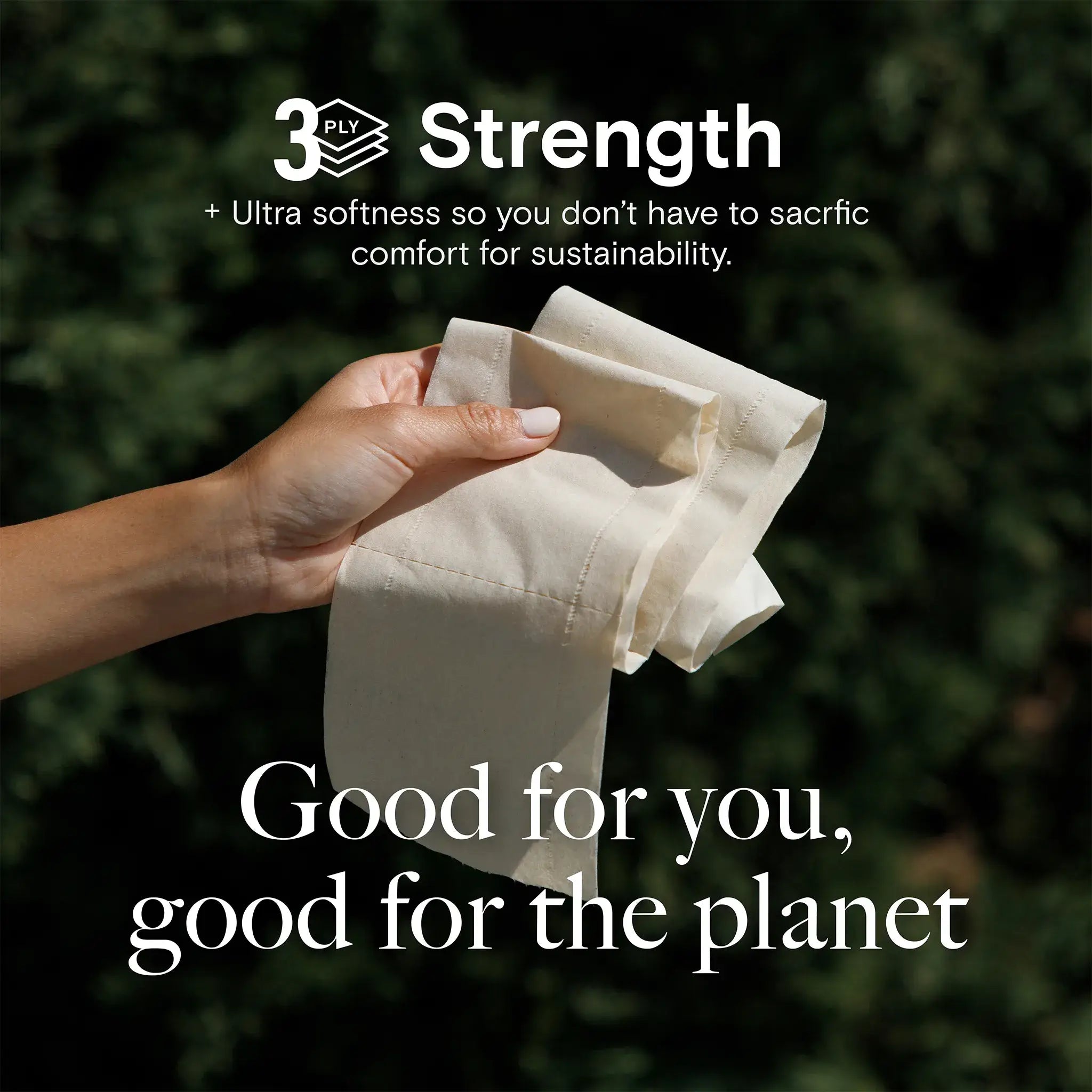
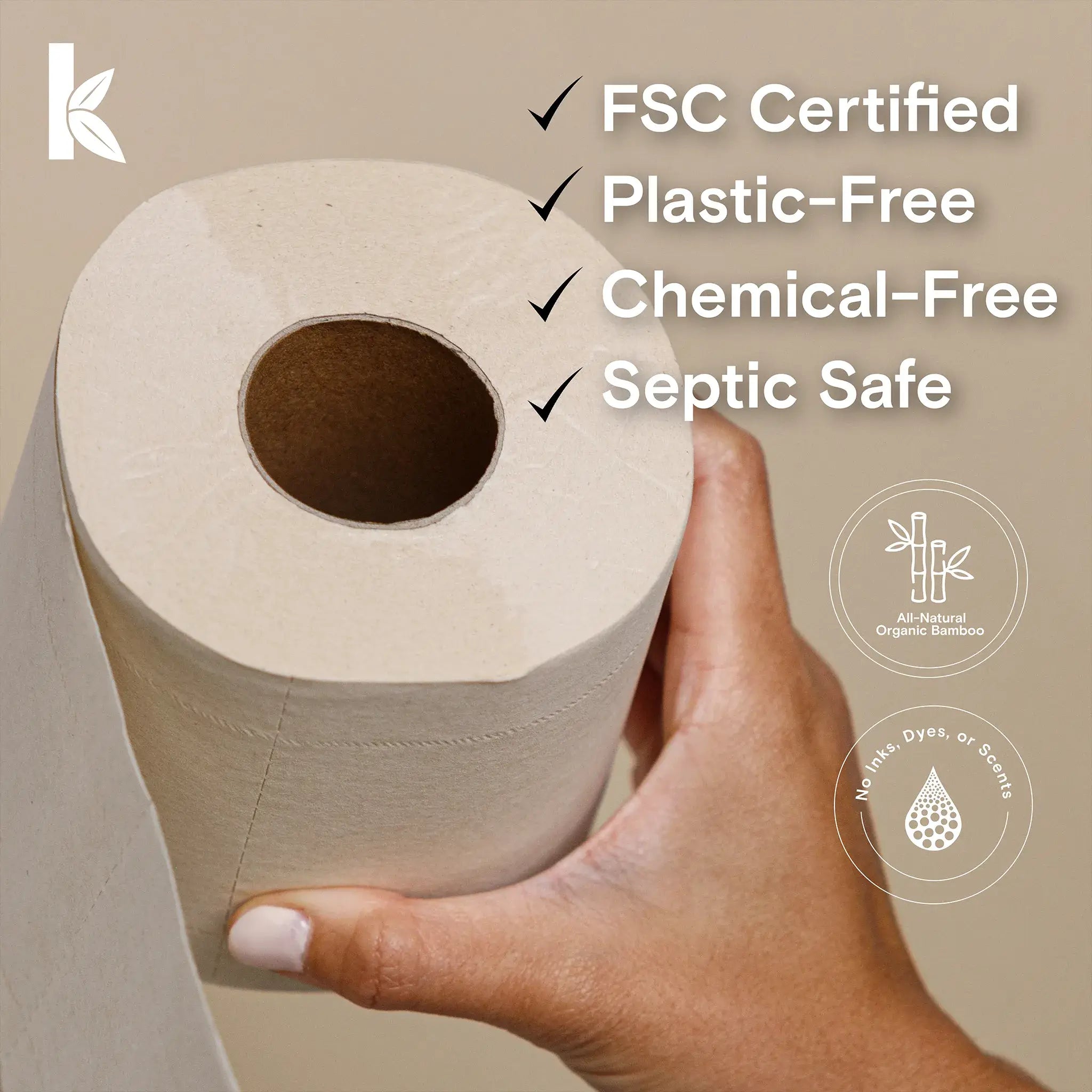

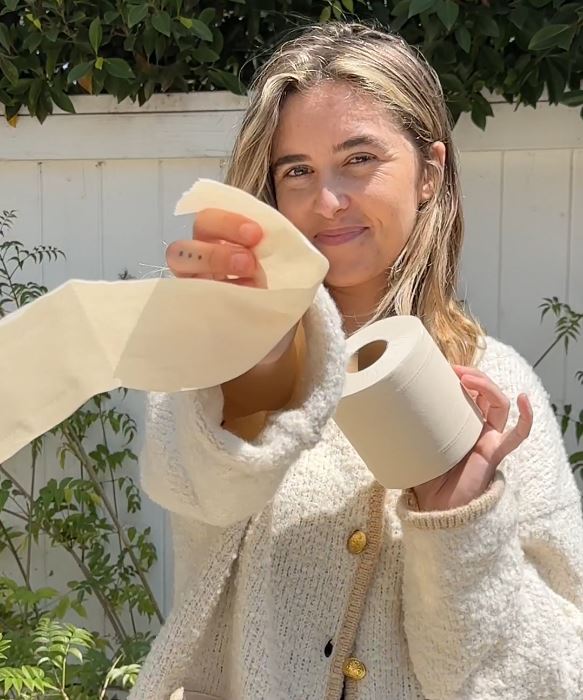
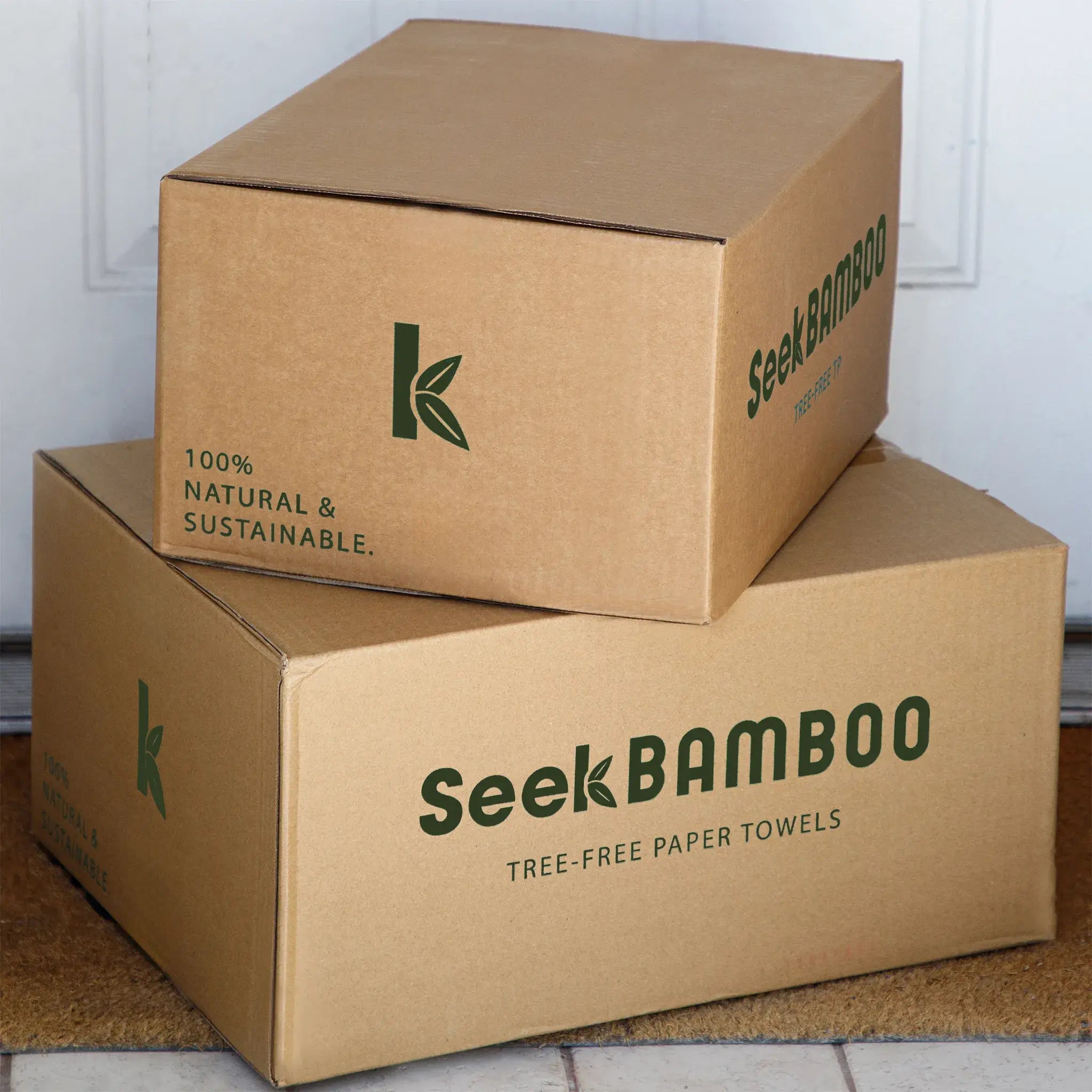
Does Toilet Paper Have an Expiration Date?
When stocking up on essentials, you might have noticed that some items come with clear expiration dates—but what about toilet paper? Unlike perishable goods, toilet paper doesn’t typically come with an expiration date stamped on the package. This absence of an expiration date often leads to the assumption that toilet paper can last indefinitely. While it’s true that toilet paper doesn’t “expire” in the traditional sense, there are factors that can cause it to deteriorate over time.
Why Toilet Paper Doesn’t Have an Expiration Date
Toilet paper is made from cellulose fibers, primarily derived from trees (or bamboo, in the case of bamboo toilet paper). These fibers are stable and don’t undergo the same kind of chemical breakdown that foods or medicines do. As a result, manufacturers don’t assign an expiration date because, under ideal conditions, toilet paper can remain usable for many years.
Additionally, the primary purpose of toilet paper—cleaning—isn’t affected by slight changes in its physical properties. Even if it becomes a bit more brittle or less absorbent over time, it can still fulfill its basic function. This is why an expiration date isn’t considered necessary.
The Impact of Storage Conditions on Toilet Paper Quality
Although toilet paper doesn’t expire in the conventional sense, it can still deteriorate if not stored properly. Over time, exposure to certain environmental conditions can cause toilet paper to lose its integrity. Here are some factors that can affect its longevity:
- Humidity: Moisture is the number one enemy of toilet paper. In humid environments, toilet paper can absorb moisture from the air, leading to weakened fibers, mold growth, or even disintegration. This is particularly true for thinner, lower-ply toilet papers.
- Light Exposure: Prolonged exposure to direct sunlight or strong artificial light can cause toilet paper to yellow and become brittle. This is due to the breakdown of the cellulose fibers, which are sensitive to UV radiation.
- Temperature: Extreme temperatures, whether too hot or too cold, can also affect the quality of toilet paper. High temperatures can cause the paper to dry out and become brittle, while freezing temperatures might lead to moisture-related damage once the paper thaws.
How Long Can Toilet Paper Last?
If stored in a cool, dry place, away from direct light, toilet paper can last for many years without significant degradation. However, if it’s exposed to poor storage conditions, you might notice changes in its texture, color, or absorbency over time. These changes don’t necessarily mean the toilet paper is unusable, but they could make it less comfortable or effective.
For those looking to maximize the longevity of their toilet paper, bamboo toilet paper is an excellent option. Thanks to the natural strength of bamboo fibers, this type of toilet paper is more resistant to environmental factors and is less likely to deteriorate quickly, making it a more durable choice for long-term storage.
Toilet Paper Longevity
While toilet paper doesn’t have a traditional expiration date, it’s not immune to the effects of time and environment. Proper storage is key to maintaining its quality over the years. By keeping your toilet paper in the right conditions, you can ensure it stays fresh and ready to use, regardless of how long it’s been in your cupboard.
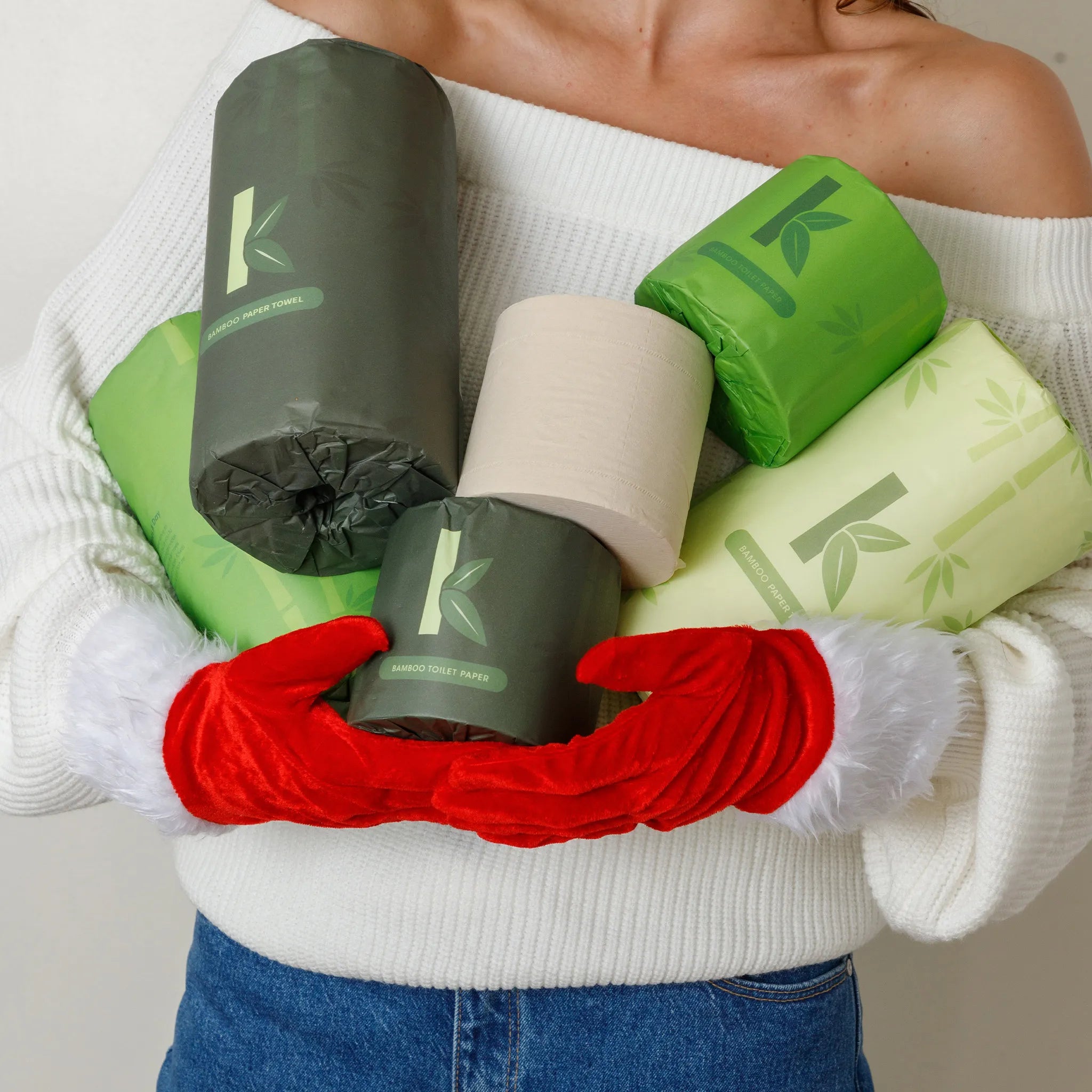

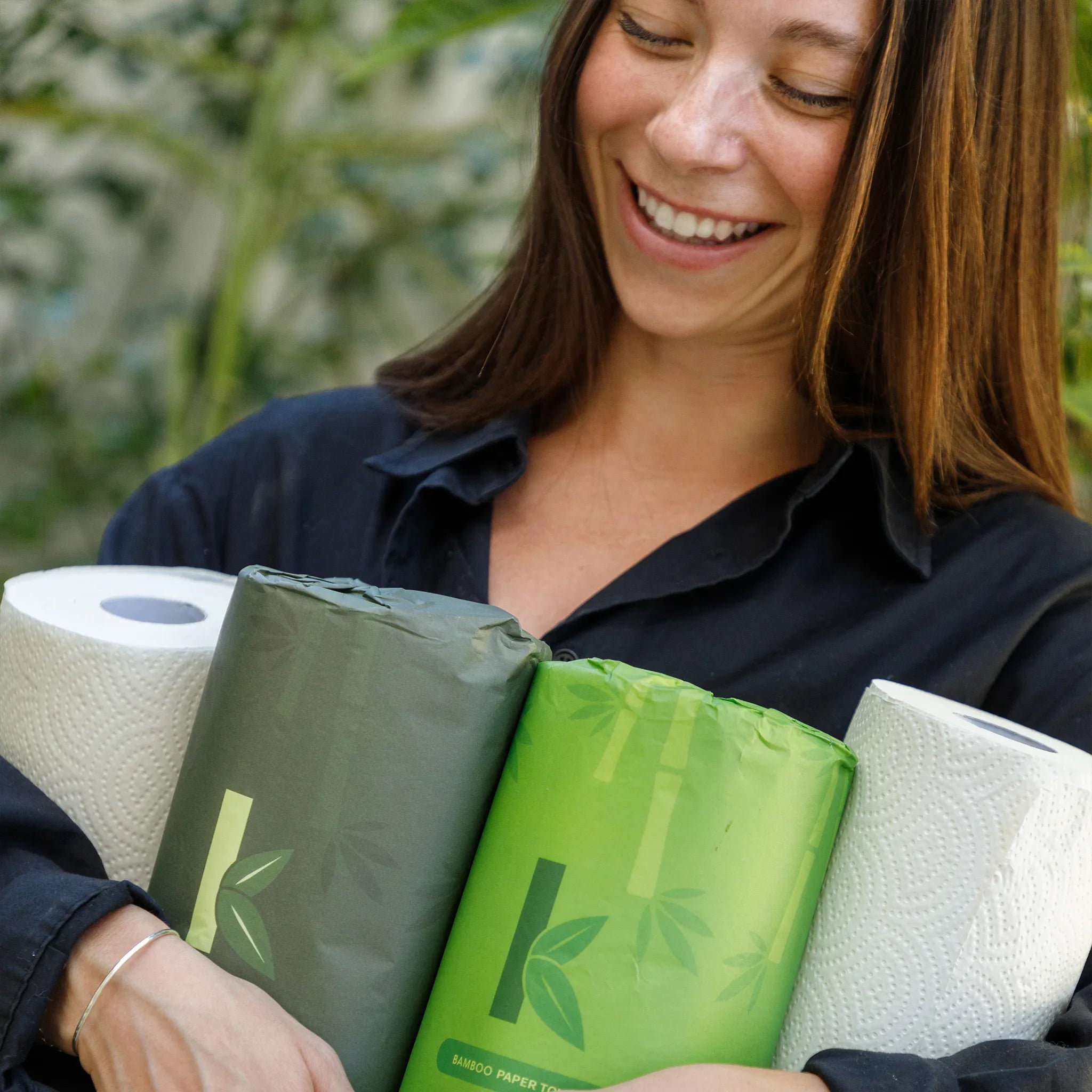



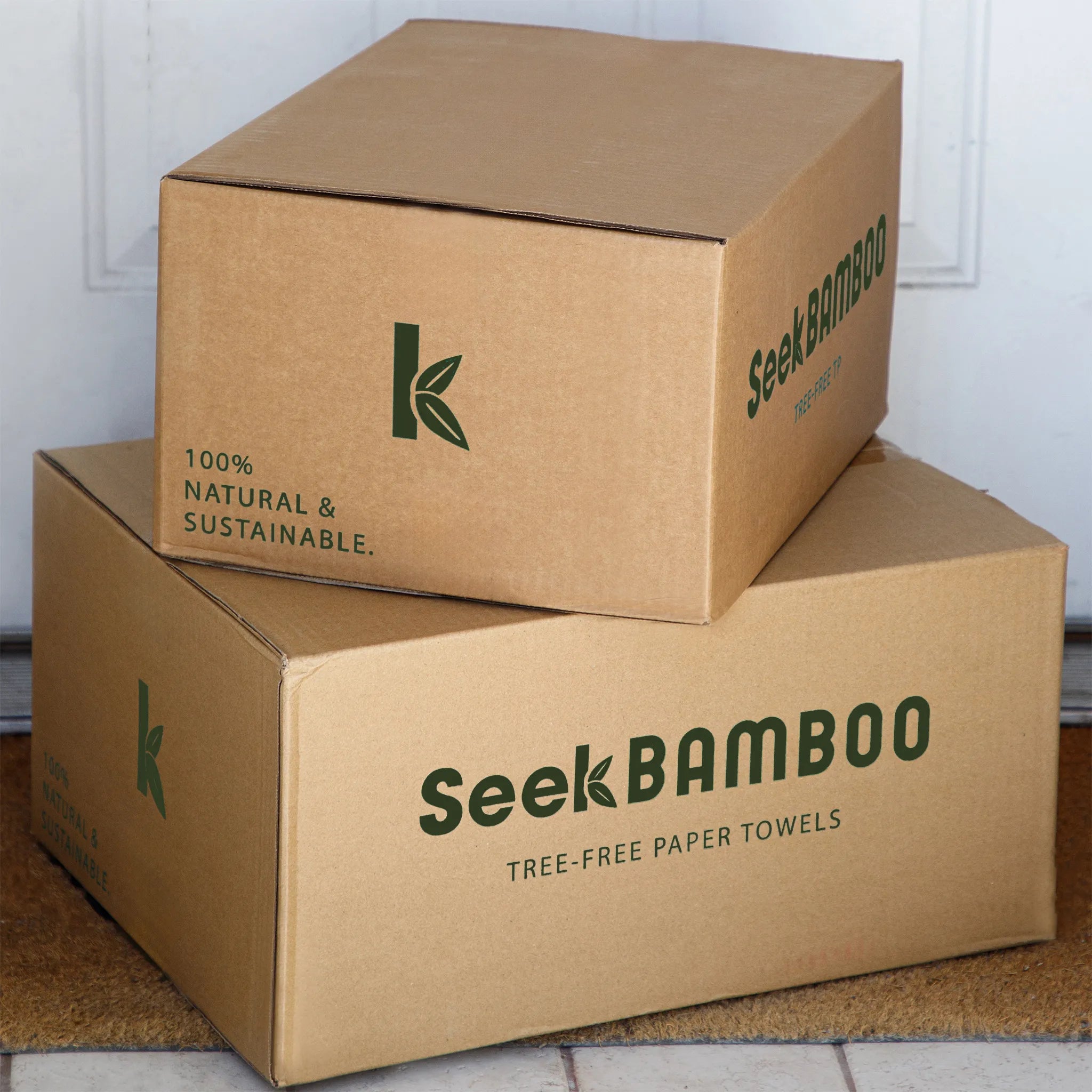
Factors That Can Affect the Quality of Toilet Paper Over Time
Toilet paper might not have an official expiration date, but it’s not immune to the effects of time and the environment. Various factors can impact the quality and usability of your toilet paper, making it less effective or even unpleasant to use. Let’s explore the key environmental factors that can cause toilet paper to degrade over time and how improper storage can exacerbate these issues.
Humidity: The Silent Destroyer
Humidity is one of the most significant threats to the longevity of toilet paper. In moist environments, toilet paper can absorb water from the air, causing the fibers to weaken and break down. This can lead to several issues:
- Mold and Mildew Growth: Damp toilet paper can become a breeding ground for mold and mildew, which not only compromises the paper’s usability but also poses health risks.
- Reduced Strength: As toilet paper absorbs moisture, its fibers become weaker, making it more prone to tearing or disintegration during use.
- Clumping: Excessive moisture can cause toilet paper to clump together, making it difficult to unroll and use properly.
To prevent these problems, it’s essential to store toilet paper in a cool, dry place, preferably in a sealed container or a well-ventilated area away from sources of moisture.
Light Exposure: The Fading Threat
While it might seem harmless, prolonged exposure to light—especially direct sunlight—can cause toilet paper to deteriorate over time. The ultraviolet (UV) rays in sunlight can break down the cellulose fibers in the paper, leading to:
Yellowing: Toilet paper that’s exposed to sunlight often takes on a yellowish hue, which can make it look old and unappealing.
Brittleness: UV rays can cause the fibers in toilet paper to become brittle, making the paper more prone to tearing or crumbling during use.
Texture Changes: Over time, light exposure can alter the texture of the paper, making it feel rougher or less comfortable against the skin.
To protect your toilet paper from these effects, store it in a dark, shaded area or keep it in its original packaging until you’re ready to use it.
Temperature: Hot and Cold Considerations
Extreme temperatures, whether hot or cold, can also negatively impact the quality of toilet paper. Here’s how:
- Heat: High temperatures can cause toilet paper to dry out, leading to brittleness and reduced flexibility. This makes the paper more likely to tear or crumble when used.
- Cold: In very cold conditions, toilet paper can become stiff and difficult to use. Additionally, if the paper has absorbed any moisture, freezing temperatures can cause it to become damaged when it thaws, leading to a soggy, unusable mess.
For optimal storage, keep your toilet paper at a stable, moderate temperature, ideally in a climate-controlled environment.
Improper Storage: How to Avoid Degradation
Improper storage can accelerate the degradation of toilet paper, reducing its lifespan and effectiveness. Here are some tips to ensure your toilet paper stays in top condition:
- Avoid Moist Areas: Keep toilet paper away from bathrooms, basements, or any area prone to humidity. Consider storing it in a closet or pantry with good ventilation.
- Keep It Covered: Use sealed containers or keep toilet paper in its original packaging to protect it from moisture, light, and dust.
- Check Regularly: If you’ve been storing toilet paper for an extended period, check it periodically for signs of degradation, such as yellowing, brittleness, or an unusual odor.
By understanding the environmental factors that can affect the quality of toilet paper, you can take steps to store it properly and extend its lifespan. Whether you’re stocking up on traditional rolls or opting for durable bamboo toilet paper, proper storage practices will help ensure that your supply remains fresh, strong, and ready to use whenever you need it.
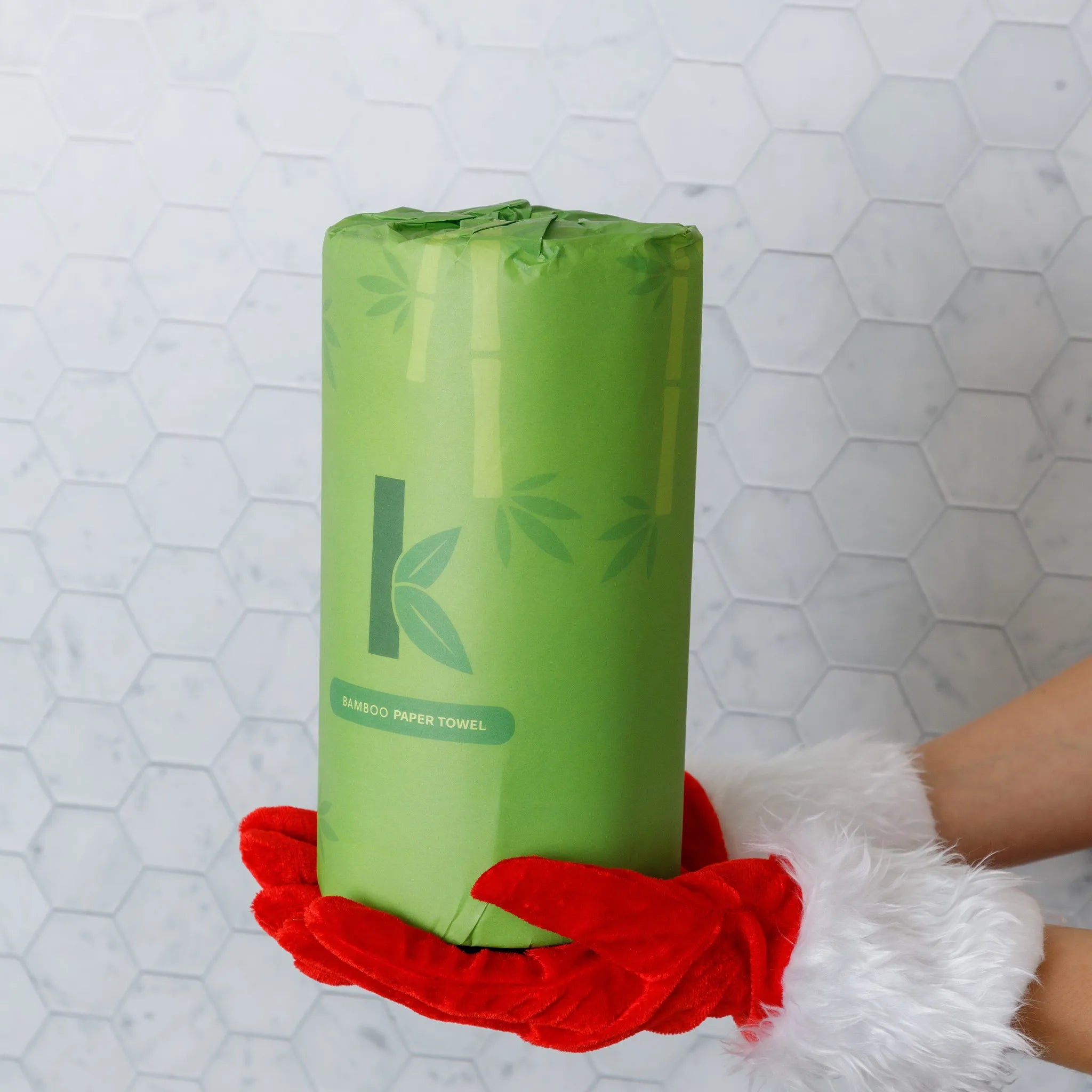

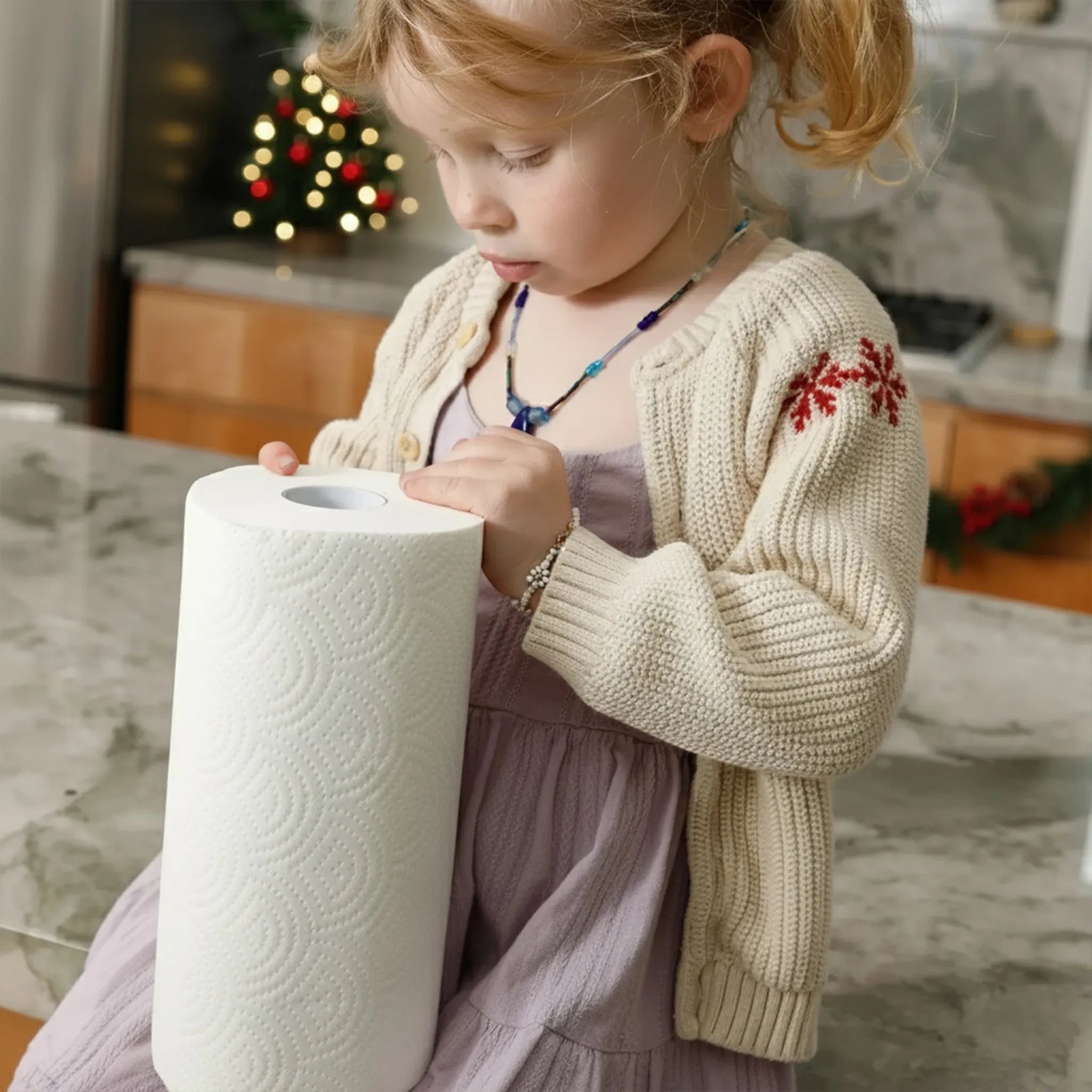

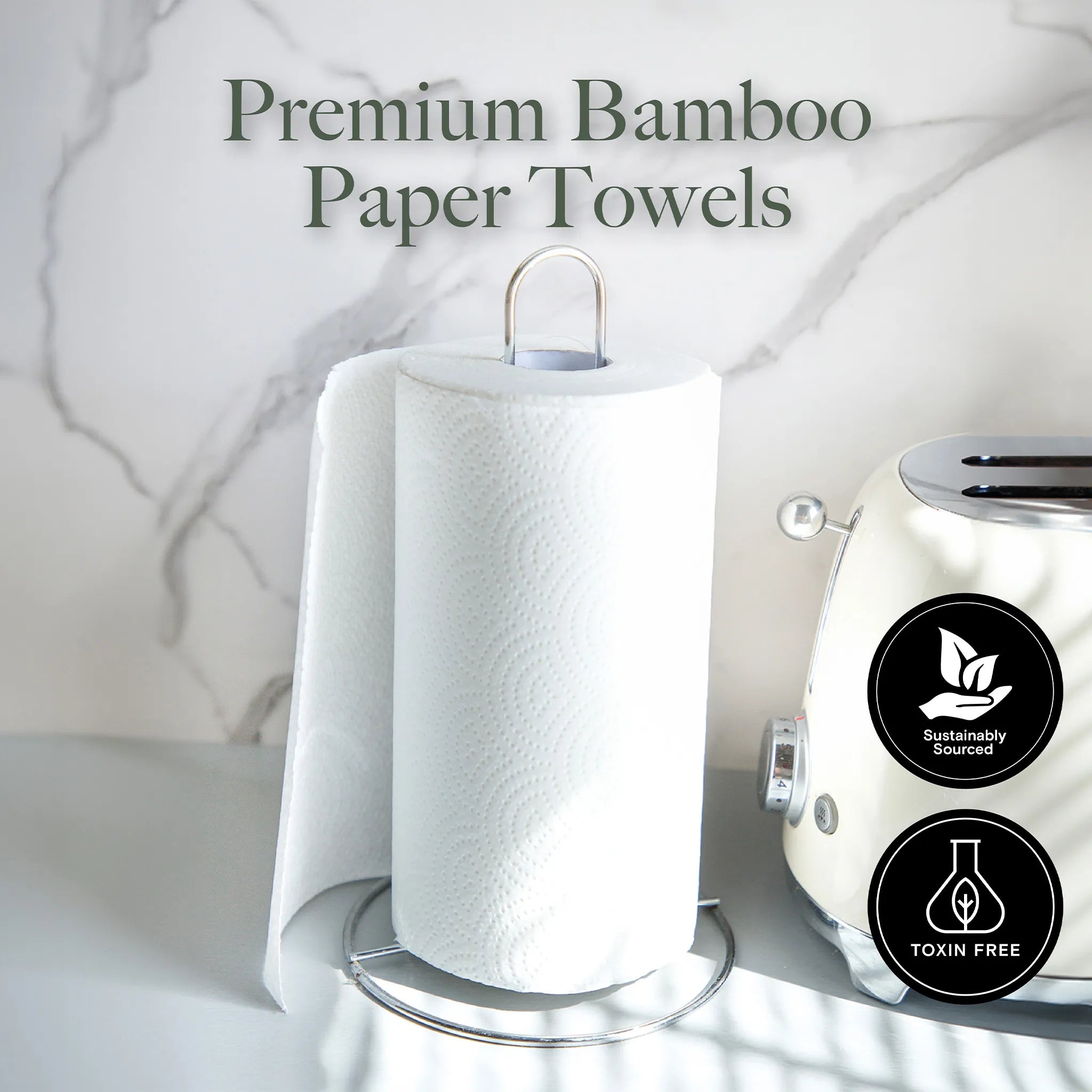

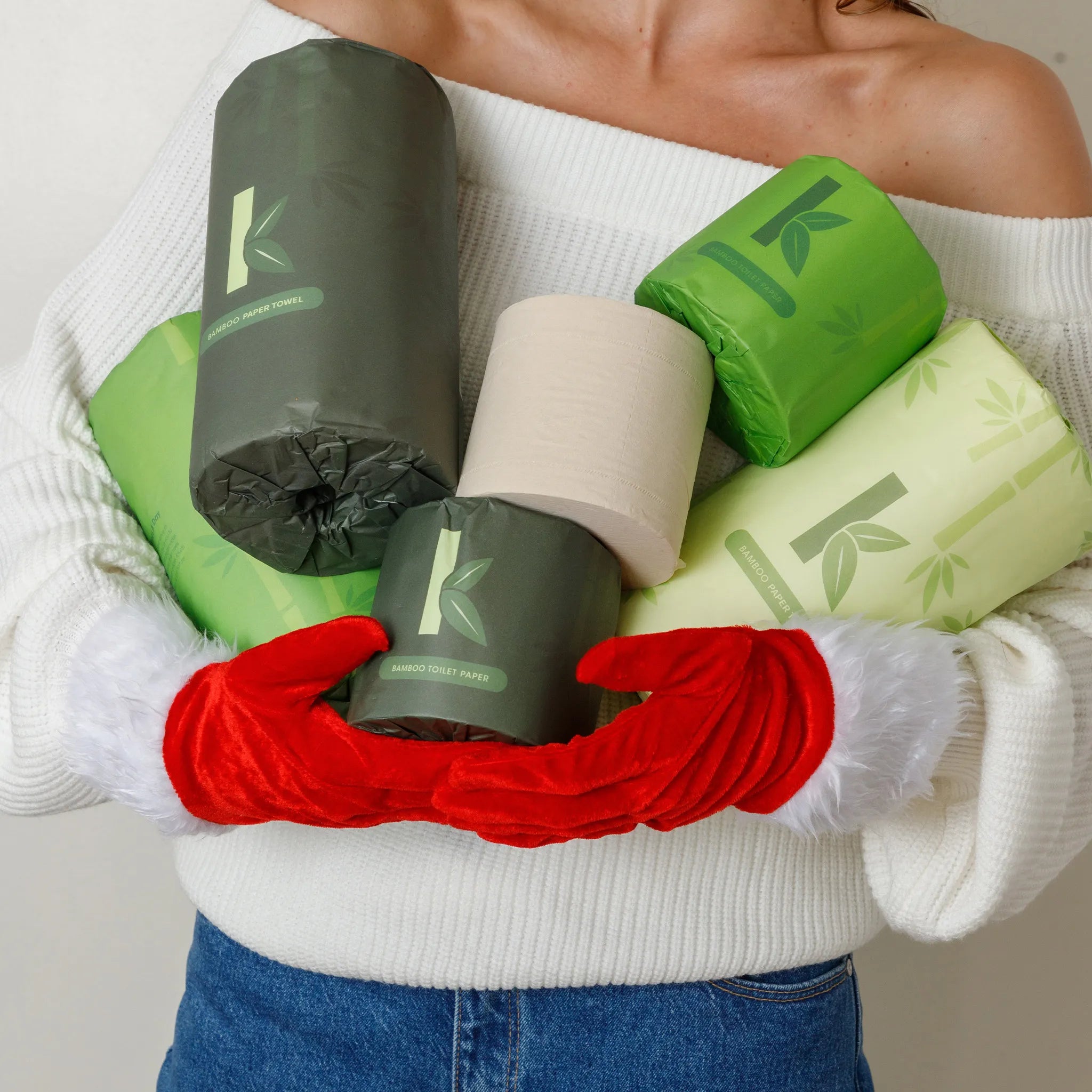
How to Properly Store Toilet Paper to Maximize Longevity
Toilet paper might seem like a durable household item, but its quality can deteriorate over time if not stored correctly. Whether you’re buying in bulk or simply want to ensure your supply stays fresh and ready to use, proper storage is key. Here are some essential tips to help you store your toilet paper in a way that maximizes its longevity.
Choose a Cool, Dry Storage Location
The environment in which you store your toilet paper has a significant impact on its shelf life. Humidity and temperature fluctuations can cause toilet paper to deteriorate quickly, so it’s important to store it in a location that’s both cool and dry.
- Avoid Humid Areas: Bathrooms, basements, and laundry rooms are often humid, making them less-than-ideal places for storing toilet paper. Instead, opt for a closet, pantry, or any other dry area of your home that’s less prone to moisture.
- Control the Temperature: Keep your toilet paper in a place with stable, moderate temperatures. Avoid storing it near heat sources like radiators, stoves, or heating vents, as excessive heat can dry out the paper and cause it to become brittle.
Protect from Direct Sunlight
Direct sunlight can cause toilet paper to yellow and become brittle over time. To avoid this, it’s best to store your toilet paper in a shaded or dark area.
- Use Covered Storage: If your storage area is exposed to natural light, consider keeping your toilet paper in a closed cabinet or inside its original packaging. Alternatively, store it in a bin with a lid to block out any light.
- Avoid Windows: When choosing a storage spot, keep toilet paper away from windows or other sources of direct sunlight. Even indirect light can have a long-term impact on the quality of your toilet paper.
Keep It Elevated
Storing toilet paper directly on the floor can expose it to potential hazards like moisture, dirt, or pests. To avoid these risks, it’s a good idea to keep your toilet paper elevated.
- Use Shelving Units: Store your toilet paper on shelves rather than directly on the ground. This helps protect it from accidental spills, flooding, or other issues that
can occur on the floor. - Avoid Cold Floors: If you’re storing toilet paper in a garage, basement, or similar area, avoid placing it directly on cold or damp floors. Instead, use a pallet or another type of elevated platform to keep it off the ground.
Rotate Your Toilet Paper Supply
If you’re storing a large quantity of toilet paper, it’s important to rotate your stock regularly. This ensures that the oldest rolls are used first, preventing them from sitting in storage for too long and potentially deteriorating.
- First In, First Out: Adopt a “first in, first out” approach to your toilet paper supply. Place newer rolls behind older ones so that the oldest stock is used first.
- Check for Signs of Degradation: Periodically inspect your stored toilet paper for any signs of yellowing, brittleness, or moisture damage. If you notice any issues, use those rolls first to prevent further deterioration.
Proper storage is essential for maintaining the quality of your toilet paper over time. By following these tips—keeping your toilet paper in a cool, dry place, protecting it from light, and using sealed containers—you can ensure that your supply remains fresh and ready to use whenever you need it. Whether you’re storing conventional toilet paper or durable bamboo varieties, these best practices will help maximize its longevity and ensure you’re never caught without a reliable roll.
Signs That Your Toilet Paper Might Have Gone Bad
Toilet paper might not have an official expiration date, but it can still deteriorate over time, especially if stored under less-than-ideal conditions. Recognizing the signs that your toilet paper is no longer in optimal condition can help you avoid an unpleasant experience when you need it most. Here are some key indicators that your toilet paper might have gone bad:
Change in Texture
One of the first signs that toilet paper is past its prime is a noticeable change in texture. Fresh toilet paper is typically soft and smooth, designed to be gentle on the skin. However, as it deteriorates, you might notice:
- Increased Roughness: If your toilet paper feels rougher or more abrasive than usual, it’s a sign that the fibers have broken down over time, making it less comfortable to use.
- Brittleness: Toilet paper that has become dry and brittle is more likely to tear or crumble when used. This can be particularly problematic if the paper disintegrates during use, leaving behind small pieces.
Discoloration or Yellowing
Another clear indicator that your toilet paper may have gone bad is a change in color. Toilet paper is usually white or off-white when fresh, but over time, it can start to yellow or take on a different hue.
- Yellowing: Exposure to light, particularly UV rays, can cause toilet paper to yellow over time. This discoloration doesn’t just affect the appearance; it can also signal that the paper’s integrity has been compromised.
- Stains or Spots: If you notice any unusual stains or spots on your toilet paper, it could be a sign that it’s been exposed to moisture or other contaminants. In such cases, it’s best to discard the affected rolls.
Reduced Strength and Durability
Toilet paper that has deteriorated often loses its strength, making it less effective and more prone to tearing.
- Easily Torn: If your toilet paper tears too easily when you try to unroll it or during use, it’s a sign that the paper fibers have weakened. This can be especially frustrating if it leads to an uneven roll or a mess during use.
- Clumping or Lumping: Sometimes, old toilet paper can start to clump or lump together, making it difficult to unroll smoothly. This clumping can occur if the paper has been exposed to moisture or has simply aged poorly.
Signs of Moisture Damage
Moisture is one of the biggest threats to toilet paper. If your toilet paper has been stored in a humid environment or has come into contact with water, it may show signs of moisture damage.
- Dampness: If the paper feels damp or slightly wet to the touch, it’s likely absorbed moisture from its surroundings. Damp toilet paper can quickly become a breeding ground for mold and bacteria, making it
unsafe to use. - Mold Growth: Mold on toilet paper appears as black, green, or gray spots and is a clear indicator that the paper has been compromised. Moldy toilet paper should be discarded immediately, as using it can pose health risks.
- Musty Odor: A musty or unpleasant odor is another sign that toilet paper has absorbed moisture and may have started to develop mold. If your toilet paper smells off, it’s best to err on the side of caution and replace it.
Unusual Appearance
If your toilet paper looks different from when you first bought it, this could be a sign that it’s no longer in good condition.
- Misshapen Rolls: If your toilet paper rolls have become misshapen or distorted, it could be due to improper storage or pressure damage. While this doesn’t necessarily render the paper unusable, it may make it harder to use effectively.
- Loose Wrapping: If the layers of toilet paper appear loose or are coming apart, this can indicate that the adhesive binding the roll has weakened. Loose wrapping can make it difficult to tear off clean sheets and may signal that the roll is past its prime.
Knowing the signs that your toilet paper might have gone bad can help you avoid any unpleasant surprises when you need it most. By keeping an eye out for changes in texture, color, strength, and signs of moisture damage, you can ensure that your toilet paper remains fresh, functional, and safe to use. If you notice any of these signs, it’s a good idea to replace the affected rolls to maintain comfort and hygiene.
Can You Still Use Old Toilet Paper?
If you’ve discovered a stash of old toilet paper in the back of your cupboard, you might be wondering if it’s still safe to use. While toilet paper doesn’t have a traditional expiration date, its quality can degrade over time, leading to questions about whether it’s advisable to use older rolls. Here’s what you need to consider before deciding whether to keep or discard your old toilet paper.
Assessing the Condition of Old Toilet Paper
The first step in determining whether it’s safe to use old toilet paper is to assess its condition. Carefully examine the rolls for any signs of deterioration:
- Check for Discoloration: If the toilet paper has yellowed or developed stains, it’s a sign that it’s been exposed to light or moisture. While discoloration alone doesn’t necessarily make the toilet paper unsafe, it can indicate that the paper’s quality has been compromised.
- Feel the Texture: Gently touch the toilet paper to check its texture. If it feels rough, brittle, or unusually dry, it may have lost its softness and strength, making it less effective and comfortable to use.
- Inspect for Moisture Damage: Look for any signs of moisture damage, such as dampness, clumping, or the presence of mold. Toilet paper that has absorbed moisture is more prone to tearing and may harbor mold or bacteria, which can pose health risks.
- Smell for Odors: Give the toilet paper a sniff to detect any musty or off odors. A foul smell could indicate that the paper has been exposed to moisture and is starting to develop mold, making it unsafe to use.
Is It Safe to Use Deteriorated Toilet Paper?
If your toilet paper has only mildly deteriorated—such as becoming slightly discolored or a bit rougher—you may still be able to use it for purposes where comfort and absorbency are less critical. However, there are certain conditions under which it’s better to discard old toilet paper:
- Mold Presence: If you notice any mold on the toilet paper, it’s essential to discard it immediately. Using moldy toilet paper can introduce harmful spores into your environment and pose serious health risks, especially for those with respiratory issues or mold allergies.
- Severe Brittleness: Toilet paper that has become severely brittle is likely to tear easily during use, leading to frustration and potential hygiene issues. If the paper crumbles in your hand or falls apart easily, it’s best to replace it with a fresher roll.
- Excessive Moisture Damage: Toilet paper that feels damp, clumpy, or has a musty odor should not be used. Moisture damage not only affects the paper’s usability but also increases the risk of bacterial growth, making it unsafe for personal use.
When to Discard Old Toilet Paper
Even if your old toilet paper doesn’t show obvious signs of severe deterioration, there are times when it’s simply better to err on the side of caution:
- Health Concerns: If you or anyone in your household has sensitive skin, allergies, or respiratory conditions, it’s wise to avoid using old or questionable toilet paper. The risk of irritation or exposure to contaminants outweighs the potential savings.
- Compromised Comfort: If the toilet paper’s texture has changed significantly, making it rough or uncomfortable to use, it’s worth discarding. Using low-quality or deteriorated toilet paper can lead to skin irritation, especially in sensitive areas.
- Visible Contamination: If the toilet paper has been stored in a dirty or pest-prone area, it may have been exposed to dust, dirt, or insects. In such cases, it’s best to discard the rolls to maintain hygiene.
Alternative Uses for Old Toilet Paper
If your old toilet paper is still somewhat usable but not ideal for personal hygiene, consider repurposing it for other tasks around the house:
- Cleaning: Use old toilet paper for general cleaning tasks, such as wiping up spills, cleaning windows, or dusting surfaces.
- Crafts: If you have children, old toilet paper can be used for arts and crafts projects. The rolls themselves can also be repurposed for DIY projects or organization.
- Emergency Situations: Keep older, less-than-perfect rolls as an emergency backup in case of a shortage, but store them separately from your primary supply to avoid confusion.
While old toilet paper can sometimes still be used, it’s important to carefully assess its condition before doing so. In cases of severe deterioration, mold, or moisture damage, it’s safer to discard the old rolls and replace them with fresh, high-quality toilet paper. Prioritizing your comfort and health is key, and if you’re ever in doubt, it’s best to opt for a new roll.
Eco-Friendly and Long-Lasting Alternatives: Bamboo Toilet Paper
As awareness of environmental sustainability grows, more people are seeking eco-friendly alternatives to everyday products, and toilet paper is no exception. Bamboo toilet paper has emerged as a superior option, offering both durability and environmental benefits that make it a wise choice for those looking to reduce their ecological footprint while ensuring a high-quality product. Let’s explore why bamboo toilet paper stands out as a long-lasting, eco-friendly alternative to conventional toilet paper.
Why Bamboo Toilet Paper?
Bamboo is one of the fastest-growing plants on Earth, capable of reaching maturity in just a few years. This rapid growth makes it a highly renewable resource, requiring fewer resources to cultivate compared to traditional trees used for paper production. But bamboo’s benefits extend far beyond its environmental impact—it also offers exceptional qualities that make it an ideal material for toilet paper.
Durability and Strength
Bamboo fibers are naturally long and strong, giving bamboo toilet paper a durability that surpasses many conventional options. This strength means that bamboo toilet paper is less prone to tearing or disintegrating, even after long periods of storage. Unlike recycled or low-ply paper, bamboo toilet paper maintains its integrity, making it a reliable choice for both daily use and long-term storage.
Resistance to Environmental Factors
One of the key advantages of bamboo toilet paper is its resistance to common environmental factors that can degrade conventional toilet paper. Bamboo fibers are more resilient to humidity and temperature fluctuations, helping the paper retain its quality over time. This resistance makes bamboo toilet paper less likely to absorb moisture, which can lead to mold growth or weakened fibers in other types of toilet paper.
Humidity Resistance
Bamboo’s natural structure allows it to better withstand humid conditions, reducing the risk of moisture damage that can cause toilet paper to clump, yellow, or develop mold.
Temperature Tolerance
Bamboo toilet paper is less susceptible to becoming brittle in high temperatures or stiff in cold environments, ensuring it remains comfortable and effective even when stored in less-than-ideal conditions.
Longer Shelf Life
Thanks to its durability and resistance to environmental factors, bamboo toilet paper often has a longer shelf life compared to conventional options. When stored properly, it can maintain its softness, strength, and usability for extended periods, making it an excellent choice for those who prefer to buy in bulk or keep an emergency supply on hand.
Eco-Friendly Production
Beyond its practical benefits, bamboo toilet paper is an environmentally responsible choice. Bamboo requires significantly less water and fewer pesticides to grow than traditional trees, and it regenerates quickly, making it a sustainable resource. Additionally, the production process for bamboo toilet paper typically involves fewer chemicals and less energy, further reducing its environmental impact.
Biodegradable and Compostable
Bamboo toilet paper is fully biodegradable and can be composted, breaking down naturally without leaving harmful residues. This makes it a great option for those looking to minimize their waste and support a circular economy.
Low Carbon Footprint
Bamboo’s rapid growth and the efficiency of its cultivation contribute to a lower carbon footprint for bamboo toilet paper production. By choosing bamboo toilet paper, you’re not only opting for a long-lasting product but also supporting sustainable practices that help protect the planet.
Storage Benefits of Bamboo Toilet Paper
Given its durability and resistance to environmental factors, bamboo toilet paper is easier to store than many conventional options. Here are some tips for maximizing its longevity
Store in a Cool, Dry Place
Like all toilet paper, bamboo toilet paper should be stored in a cool, dry location to prevent exposure to moisture and extreme temperatures. However, its natural resilience means it can better withstand minor fluctuations in these conditions.
Keep It Sealed
To further protect your bamboo toilet paper from dust, pests, and humidity, consider storing it in a sealed container or keeping it in its original packaging until you’re ready to use it.
Rotate Your Stock
While bamboo toilet paper is long-lasting, it’s still a good idea to rotate your stock regularly, using older rolls first to ensure the freshest supply.
Bamboo toilet paper offers a winning combination of durability, environmental responsibility, and long-lasting quality. Its natural strength and resistance to environmental factors make it an ideal choice for those looking to store toilet paper for extended periods without sacrificing comfort or usability. By switching to bamboo toilet paper, you’re making a choice that benefits both your household and the planet, ensuring a reliable, eco-friendly option for all your toilet paper needs.
Make the Switch to a Long-Lasting, Eco-Friendly Choice
Toilet paper might be an everyday item, but it’s one that deserves careful consideration when it comes to quality, longevity, and environmental impact. While toilet paper doesn’t technically expire, factors like humidity, light exposure, and improper storage can degrade its quality over time. By recognizing the signs of deterioration—such as changes in texture, color, or strength—you can ensure that your toilet paper remains fresh, comfortable, and ready for use.
When it comes to choosing a reliable and sustainable option, bamboo toilet paper stands out as a superior choice. Its natural durability, resistance to environmental factors, and eco-friendly production make it a smart investment for both your household and the planet. Whether you’re stocking up for the long haul or simply want to ensure that your supply stays in top condition, bamboo toilet paper offers the longevity and quality you need.
Ultimately, by taking simple steps to store your toilet paper properly and opting for durable, sustainable alternatives like bamboo, you can enjoy peace of mind knowing that you’re making choices that benefit both your comfort and the environment. So, the next time you reach for a roll, you can feel confident that it’s as fresh, effective, and eco-friendly as the day you bought it.
Can Toilet Paper Expire?
Common Concerns and Solutions for Sensitive Skin
Does Toilet Paper Expire?
Toilet paper doesn’t have a traditional expiration date, but its quality can degrade over time due to environmental factors like humidity, light exposure, and improper storage. While it won’t “expire” in the way food does, it can become less effective, brittle, or discolored if not stored correctly.
What are the Signs that My Toilet Paper Has Gone Bad?
Signs that toilet paper might have gone bad include a change in texture (becoming rough or brittle), discoloration (yellowing or spotting), a musty odor, or visible mold. If your toilet paper shows any of these signs, it may be less comfortable or even unsafe to use.
Can I Still Use Old Toilet Paper?
It depends on the condition of the toilet paper. If it’s only mildly deteriorated (e.g., slightly discolored or a bit rougher), it may still be usable for non-hygiene purposes like cleaning. However, if it’s moldy, damp, or excessively brittle, it’s best to discard it to avoid potential health risks.
How Should I Store Toilet Paper to Keep It Fresh?
To keep toilet paper fresh and in good condition, store it in a cool, dry place away from direct sunlight. Consider using sealed containers to protect it from moisture, dust, and pests. Proper storage can help extend its shelf life and maintain its quality over time.
What’s the Difference Between Bamboo Toilet Paper and Regular Toilet Paper?
Bamboo toilet paper is made from bamboo fibers, which are naturally strong, durable, and eco-friendly. It’s more resistant to environmental factors like humidity and temperature changes, giving it a longer shelf life. Bamboo toilet paper is also biodegradable, compostable, and produced with fewer chemicals, making it a more sustainable choice than regular toilet paper.
Is Bamboo Toilet Paper More Durable Than Regular Toilet Paper?
Yes, bamboo toilet paper is generally more durable than regular toilet paper. Bamboo fibers are longer and stronger, which helps the paper retain its integrity over time, even in less-than-ideal storage conditions. This makes bamboo toilet paper a better option for those looking for a longer-lasting product.
Why Does My Toilet Paper Turn Yellow?
Toilet paper can turn yellow due to exposure to light, particularly UV rays. This discoloration is a sign that the paper’s cellulose fibers are breaking down. While yellowed toilet paper isn’t necessarily unsafe, it’s a sign that it’s starting to deteriorate and may not be as comfortable or durable as it once was.
How Long Can Toilet Paper Last in Storage?
Toilet paper can last for many years if stored properly in a cool, dry place away from light and moisture. However, the quality may start to degrade after a few years, especially if the paper is exposed to unfavorable storage conditions. Bamboo toilet paper, due to its durability, may have an even longer shelf life.
Is It Worth Switching to Bamboo Toilet Paper?
Switching to bamboo toilet paper is worth considering for several reasons. It’s more durable, environmentally friendly, and resistant to common factors that degrade regular toilet paper. Bamboo toilet paper is a sustainable alternative that offers both quality and peace of mind, making it a valuable choice for eco-conscious consumers.


